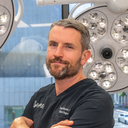Posted underBreast Implants q&a
Why do my implants go off to the side like this? Are they supposed to sit this low? (Photo)
Before and after pic was 2014, The other pic showing my nips is what they look like in 2018 they look low 500cc saline implants under the muscle. I picture before and after photo shows what they did look like. The other one in my bathroom is of what they look like after five years and I don’t like how they dropped into the position. They look lower and of to the side more then together.
Answers (6)
From board-certified doctors and trusted medical professionals
Dr. James H. Rogers, MD

Dr. James H. Rogers, MD
Board Certified Plastic Surgeon
Answer
Dr. Daniel Barrett, MD

Dr. Daniel Barrett, MD
Board Certified Plastic Surgeon
Answer
Dr. Tom J. Pousti, MD
Dr. Tom J. Pousti, MD
Board Certified Plastic Surgeon
Answer
Dr. Gaurav Bharti, MD, FACS
Dr. Gaurav Bharti, MD, FACS
Board Certified Plastic Surgeon
Answer
Dr. Victor Ferrari, MD, FACS
Dr. Victor Ferrari, MD, FACS
Board Certified Plastic Surgeon
Answer
Dr. Brooke R. Seckel, MD, FACS (retired)
Dr. Brooke R. Seckel, MD, FACS (retired)
Board Certified Plastic Surgeon
Answer
More Breast Implants Questions
See all Breast Implants Q&AWE SEND PRETTY
EMAILS
What’s trending? Who’s turning heads? Which TikTok myths need busting? We’ve got you. No fluff, no gatekeeping—just real talk. Get our free, unfiltered newsletter.